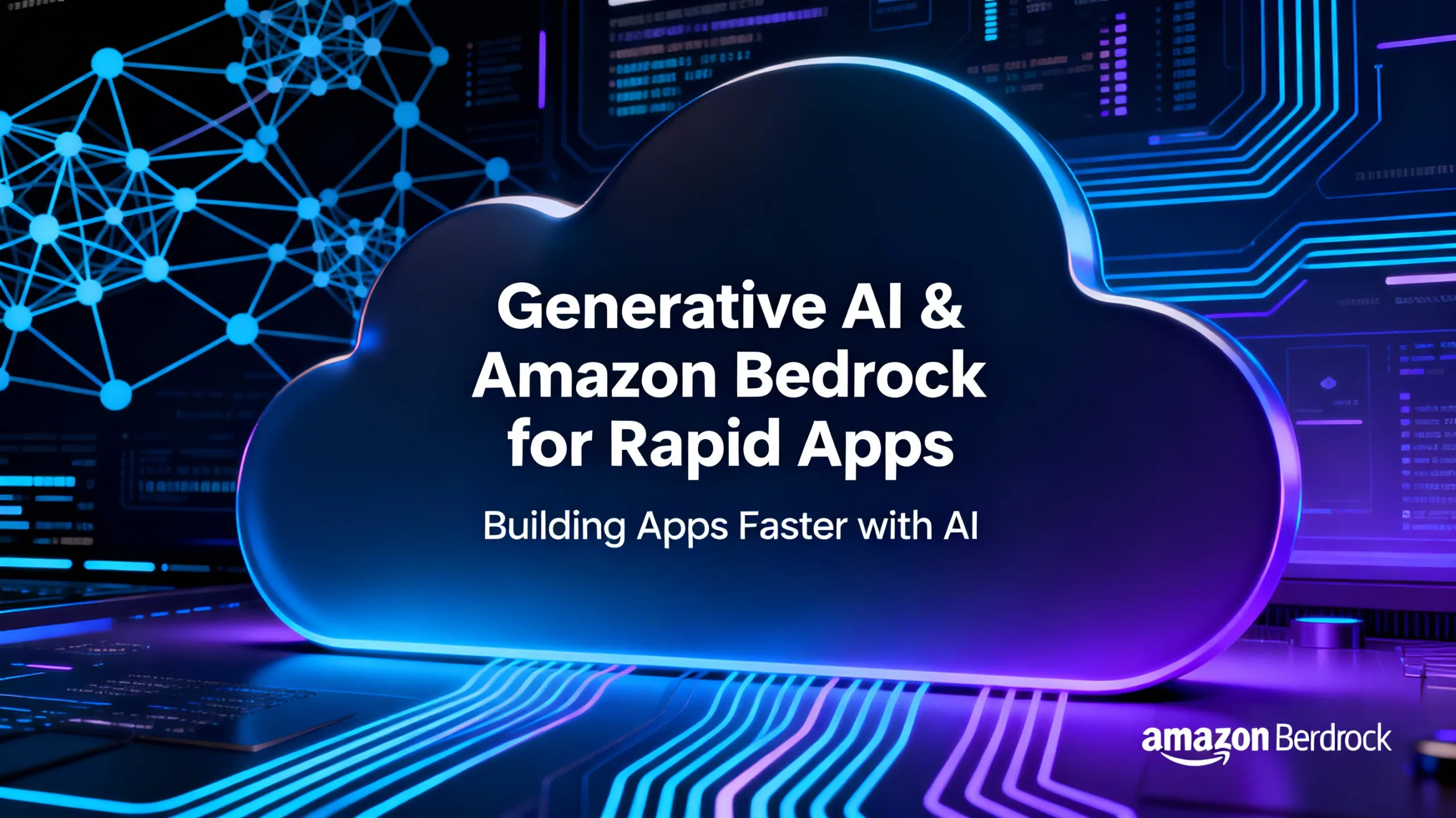
Introduction
The rise of generative AI and Amazon Bedrock is reshaping how teams prototype and ship applications. By combining large foundation models with Bedrock’s managed APIs, developers can iterate quickly, offload heavy model management, and focus on product logic. This article explains practical patterns, examples, and an actionable roadmap for leveraging generative AI and Amazon Bedrock for rapid application development.
Why generative AI and Amazon Bedrock accelerates development
Generative AI reduces manual labor by producing text, code, summaries, and data transforms. Amazon Bedrock adds value by providing secure, scalable access to multiple models (both third-party and Amazon’s own) through a unified API, removing infrastructure overhead. Teams report that prototyping becomes faster because they don’t need to provision GPUs or maintain model checkpoints; instead they can experiment with model prompts and prompt-tuning in hours. Practical benefits include reduced time-to-prototype, simpler model switching, and integrated security controls like VPC endpoints and IAM policies.
Common application patterns and examples
Generative AI and Amazon Bedrock supports many application types. Below are patterns with short examples developers can adopt immediately.
- Conversational assistants: Use a foundation model for intent recognition, slot filling, and contextual replies. Example: a customer support bot that summarizes previous tickets, suggests knowledge base articles, and escalates complex cases to humans.
- Code generation and augmentation: Automate boilerplate code, generate unit tests, or create SDK snippets. Example: a developer portal that accepts a feature description and returns starter code plus test cases.
- Document intelligence: Extract structured data, create summaries, and translate policies into plain language. Example: an insurance app that ingests claims documents and produces a claims summary with recommended next steps.
- Data augmentation and pipelines: Synthesize labels, expand training datasets, or normalize inputs for downstream models.
Architecture and integration best practices
To get production-ready quickly while mitigating risk, follow these architectural principles when building with generative AI and Amazon Bedrock:
- Isolate model calls: Wrap Bedrock interactions inside a service layer so you can switch models or providers with minimal changes.
- Design for fallbacks: Provide deterministic fallbacks (e.g., rule-based responses) when model confidence is low or latency spikes.
- Secure and audit: Use IAM roles, VPC endpoints, and encryption for data in transit and at rest. Log prompts and responses for observability while masking PII.
- Cost control: Cache frequent responses, batch requests where possible, and set usage quotas per environment to prevent runaway costs.
- Example flow for a support chatbot:
- 1) Ingest customer message and retrieve user context from a database.
- 2) Call Bedrock for intent classification and suggested reply.
- 3) Validate model output with business rules, store the interaction, and deliver the reply.
Prompt engineering, evaluation, and iteration
Effective prompt engineering is core to success. Start with clear system and user instructions, and apply few-shot examples for complex tasks. Use A/B testing to compare different prompt designs and measure metrics such as accuracy, latency, and user satisfaction. Establish evaluation datasets that reflect real-world inputs; for instance, a support dataset should include multi-turn conversations, abbreviations, and edge cases. Continuous improvement cycles should include:
- Collecting labeled model outputs and human feedback.
- Refining prompts or adding contextual retrieval (RAG) for knowledge-grounded responses.
- Automating regression tests against expected outputs to catch prompt drift after updates.
Practical checklist to build a rapid prototype
Follow this short checklist to move from idea to prototype in days:
- Define the target user story and success metrics (e.g., reduce first response time by X%).
- Sketch a minimal data flow and identify sensitive data that needs redaction or encryption.
- Choose a Bedrock model (or two) and design your initial prompts with examples.
- Implement a thin service layer that handles calls, caching, and retries.
- Run a small pilot with internal users, collect feedback, and iterate on prompts and rules.
For example, a small team built a knowledge assistant in 48 hours by using Bedrock for retrieval-augmented generation, a PostgreSQL store for short-term context, and an express service wrapper for model calls. The result replaced manual triage for 30% of incoming queries during the pilot.
Cost, performance, and governance considerations
When scaling beyond prototypes, align stakeholders on cost and compliance. Monitor both API call volume and token usage; Bedrock pricing varies by model and usage pattern. Implement fallbacks and rate limits to maintain responsive SLAs. For governance, document prompt templates, maintain versioned prompts, and control which models are allowed in production. Regularly audit logs for data leakage and implement redaction where necessary.
Conclusion
Generative AI and Amazon Bedrock together provide a fast path from idea to working application by removing infrastructure barriers and enabling model experimentation. Adopt a service-wrapped architecture, focus on prompt engineering, and enforce security and cost controls to move confidently from prototypes to production. With these patterns and a short checklist, teams can iterate rapidly while keeping reliability, privacy, and economics in check.






Leave a Reply